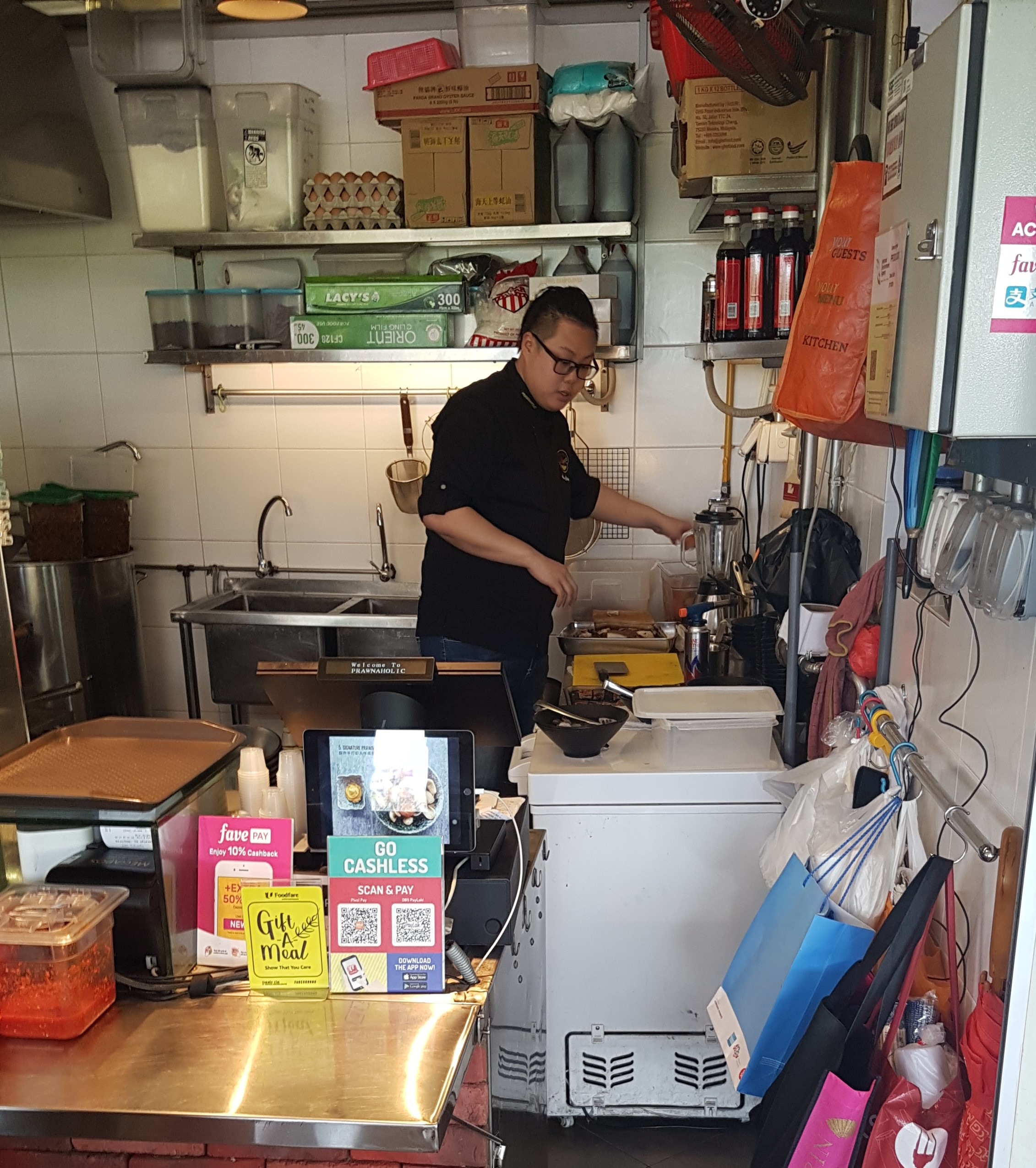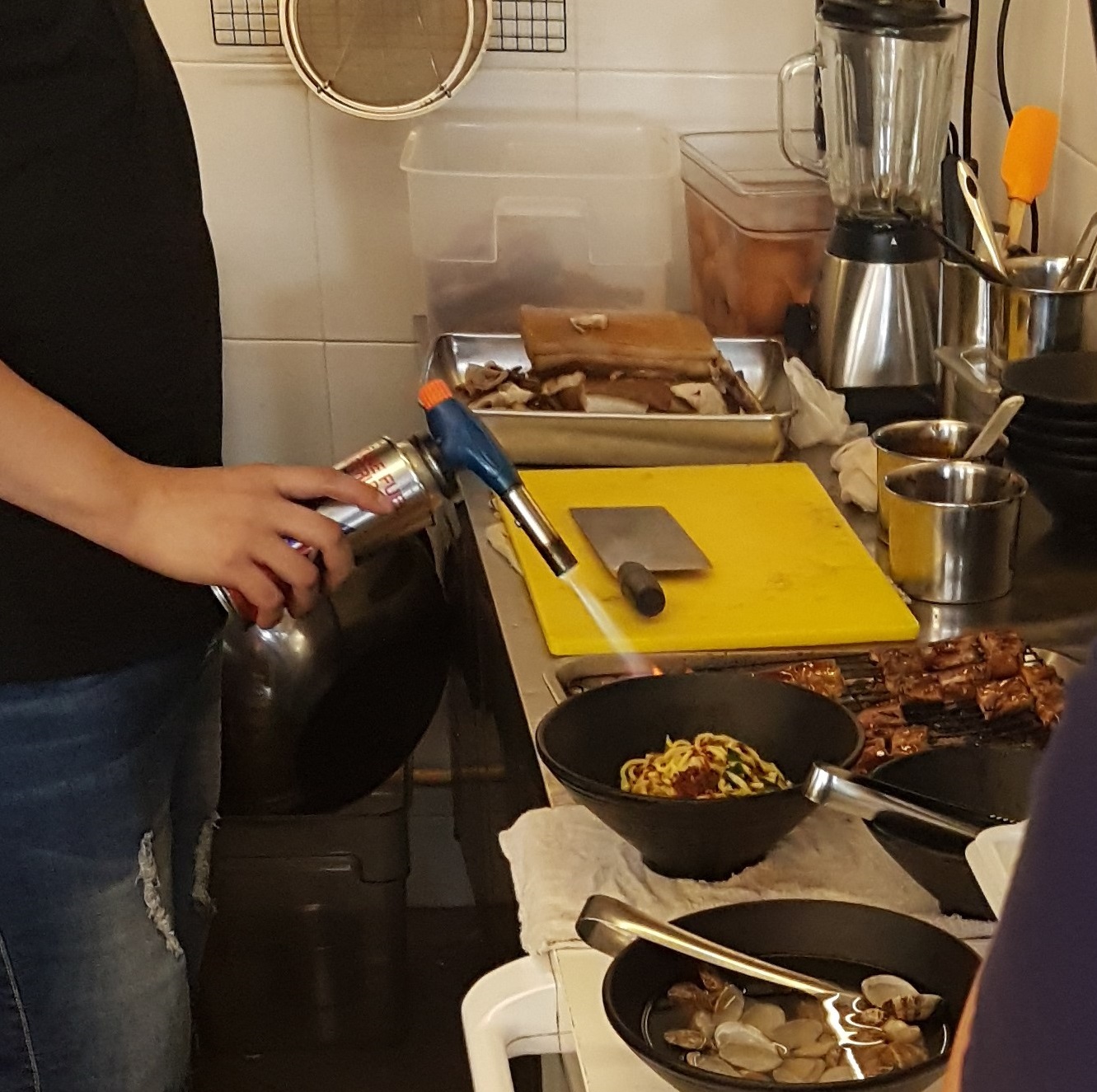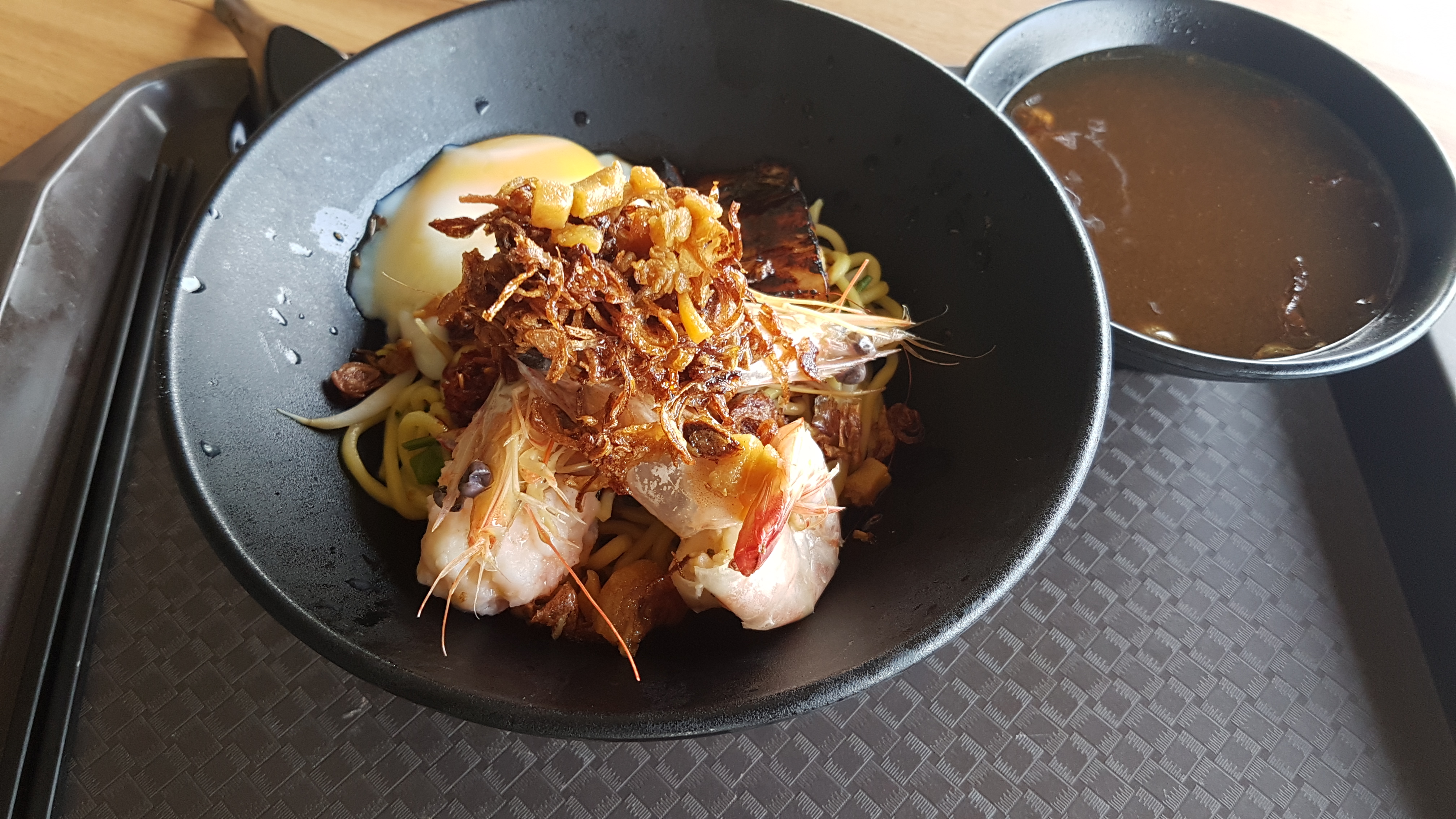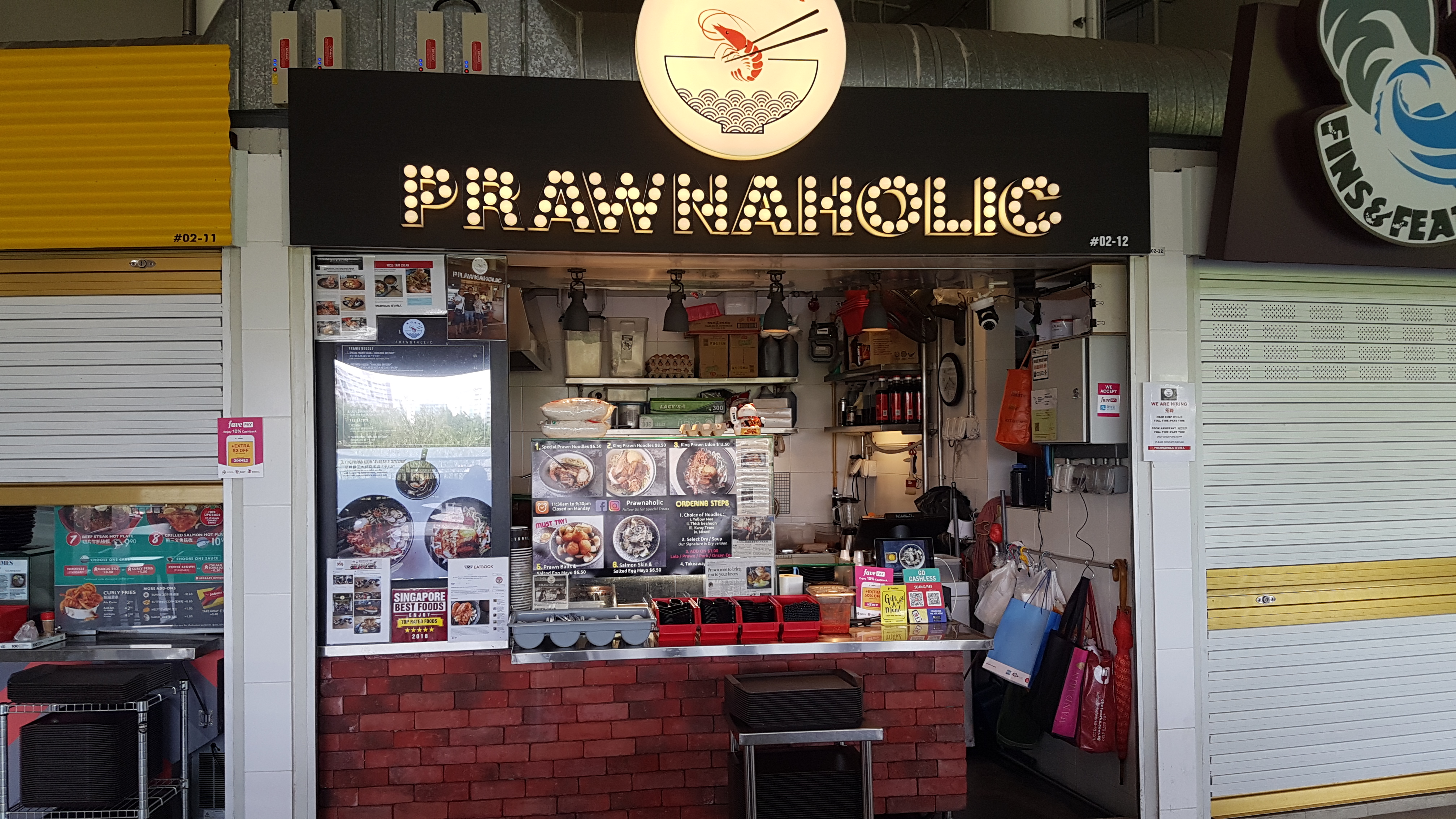I had the opportunity to interview a hawker vendor as part of a film project and I took this opportunity to observe the chef cooking up his specialty, prawn noodles. It is interesting to see behind the scenes as to how it is being prepared and done. Something interesting about this prawn noodles is that it is no ordinary noodles but an innovation from the original.
Process Documentation
The process starts with the order from the customer and the chef proceeds to prepare the order. The chef goes on to do the necessary steps for the dish that the customer order. In my case, it was prawn noodles. The preparation sequence goes as follow; first cut the pork slices, then the chef will prepare the noodles. After which, he goes on to blow torch the pork slices and adds the rest of the condiments inside the bowl of noodles. This marks the end of the cooking process.


Steps
- Orders from the customer
- Cutting of the pork slices.
- Preparation of the noodles
- Blow torch the pork slices
- Add pork slices into the bowl of noodles
- Add half boiled egg and prawn into the bowl.
- Add additional condiments into the bowl.

Worksite Documentation

The worksite features a typical hawker vendor store space with the unit having just enough space for at most three people inside. During the entire process, there was not much space for other people to move in and out of the unit. The worksite though has many parts to it, from a space to cut things; to the storage fridge; and the place to cook the noodles. There is a lot more than it meets the eye for the place.
Tools Used
I was actually surprised at the number of tools needed to prepare one bowl of noodles. There are actually more tools that are used in the preparation phase but the ones that I drew here were observed during the cooking phase of the noodles.
Pain Points
Due to the limited space in the kitchen, there is no space for rest. The chef mentioned that it gets tiring especially on days whereby there is a large influx of customers. Having to stand the entire time, it gets quite tiring at times.
